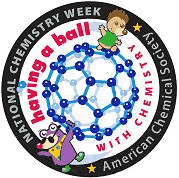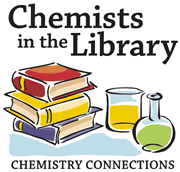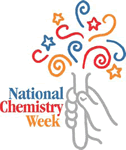Online Resources
This is a collection of online resources (websites, software, etc.). A separate collection of Print Resources is also available.
Key: E=Elementary (K—5), I=Intermediate (6—8), HS=High School (9—12), C=College, G=General Public
Materials for Sports Equipment
- Chemistry: Making it Real — Chemistry of Sports (I)
- Includes resources that take an in-depth look at how chemistry has had a huge impact on all kinds of sports — from golf to paintball. Provided by: NSDL Middle School Portal.
- How It’s Made — Videos (E, I, HS, C, G)
- Learn the mysteries behind how everyday objects are made. Videos show how curling stones, football helmets, pinball machines, snowboards, and treadmills, plus many other products are made. Provided by: The Science Channel.
- Materials World Module — Sports Materials (I, HS)
- Students explore the materials design and function of balls used in athletics, test and analyze their interactions with many surfaces they come in contact during play, and design a suitable material for use in a newly invented game. Provided by: Northwestern University.
- MoleClues (E, I)
- MoleClues is a web site for young people to investigate the world of molecules. Created by Molecular Frontiers Foundation who expert scientists include nine Nobel laureates, students are able to ask questions in a safe environment and have discussions with other students and expert scientists from all over the world. On MoleClues, students are rewarded for QUESTIONS about molecules, not their answers! Provided by: Molecular Frontiers Foundation.
- StrangeMatter — Discover the Science of Everyday Stuff! (I)
- Strange Matter investigates four areas of materials science: structure, properties, processing, and performance. This exhibit is traveling to science centers and museums in North America through May 2009. Visit the website to access guides to the exhibit, experiments that can be done at home or in the classroom, resources for further exploration, and video interviews with the people behind materials science. Developed by the Ontario Science Centre. Provided by: Materials Research Society.
Sports Science
- American Council on Exercise (G)
- The American Council on Exercise® is a nonprofit organization committed to enriching quality of life through safe and effective exercise and physical activity. As America’s Authority on Fitness, ACE protects all segments of society against ineffective fitness products, programs and trends through its ongoing public education, outreach and research. ACE further protects the public by setting certification and continuing education standards for fitness professionals. This site includes an excellent Exercise Library, Health & Fitness Tips, and Healthy Recipes.
- American College of Sports Medicine (G)
- ACSM is devoted to public awareness and education about the benefits of physical activity for people of all ages, from all occupations. The physicians, researchers and educators of the College have created tools for the general public and for special audiences.
- ASTM Committee F08 on Sports Equipment and Facilities (G)
- F08’s focus is on the development and review of standards for sports equipment, surfaces, and facilities to reduce inherent risk of injuries and promote knowledge as it relates to these standards. Provided by: ASTM International.
- The Exploratorium — Science of Sports (E, I, HS, C, G)
- Explore the science behind skateboarding, baseball, hockey, and other popular sports. Provided by: The Exploratorium.
- The Fitness Jumpsite: Your Connection to a Lifestyle of Fitness, Nutrition, and Health (G)
- The mission of this non-commercial web site is to provide quality fitness, health and nutrition related information and education across the globe. The “Fitness Library” includes: Getting & Staying Active, Managing Your Weight, Nutrition Made Easy, and Fitness Equipment. This site was developed by Vicki Pierson and Renee Cloe, who are ACE certified Personal Trainers. Provided by: The Fitness Jumpsite.
- Greatest Inventions of All Times — Greatest Inventors (I, HS, C, G)
- Based on the Encyclopedia Britannica’s “The Greatest Inventions of All Times,” includes the boomerang, bicycles, elastic fabric, modern parachute, scuba gear, skates, skis, plus many other inventions used by sports enthusiasts. Provided by: Edinformatics.
- MedlinePlus: Sports Fitness (I, HS, C, G)
- Sports can be a great way to get in shape or stay that way. While training varies by sport, cross training builds stronger bones. Remember to listen to your body to prevent injuries and to use equipment safely. What you eat and drink is also important with water being the most important nutrient for active people. This site contains an authoritative collection of links. Provided by: National Library of Medicine.
- MIT OpenCourseWare — SP 235 Chemistry of Sports, Spring 2007 (C)
- Taught by Dr. Patricia Christie, this seminar focuses on three sports, swimming, cycling and running. There will be two components to the seminar, a classroom and a laboratory. Seminars introduce students to the chemistry of their own biological system and for the laboratory, students complete a triathlon. Provided by: Massachusetts Institute of Technology.
- Physical Activity and Sports Resources (HS, C, G)
- A guide to web and library resources that was compiled by Gerry Greenberg, Physical Activity and Sports Bibliographer, Ohio State University Libraries. Provided by: Ohio State University.
- Physiology Learning Cycle Units (I)
- This web site and associated student handout explores the affects of exercise on some of the human body systems. It also asks students to consider each source of information and to rate its accuracy. Provided by: The American Physiological Society.
- Plasticsinfo.org — Better Living With Plastics (G)
- Every day, plastics help make our lives better, healthier and safer. This site provides useful tips and simple solutions to help you make the most of the innovation and convenience plastics have to offer. From bicycle helmets and flotation devices to mouth guards and other protective sporting gear, plastics help to keep active kids safe and healthy every day. Provided by: American Chemistry Council.
- Scholarly Sport Sites: A Subject Directory (HS, C, G)
- This subject directory brings together the websites to assist the serious sports researcher, kinesiology librarian, sport information specialist, college/university student and faculty. Created by Gretchen Ghent under the auspices of the University of Calgary Library, the North American Sport Library Network and the International Association for Sports Information. Provided by: University of Calgary Library.
- Slam Dunk Science (I, HS)
- Introduces many aspects of sports science and engineering as they relate to athletic shoe design, and explains how to set up a low-cost sports research lab in the classroom. Provided by: jllarsen@scire.com.
- S. O. S. (Secondary Online Science) — Fashion Victim (I)
- Fun, interactive games aimed at 11—14 year olds who want a new way of learning science. For “Fashion Victim,” you need to visit shops, buy clothes and play action games. Decide which clothes to buy as some of them will perform better in Winter Wipeout, Downtown Skater and River Racer. Developed by RSC and IoP. Provided by: Channel4Learning.
Sports Nutrition
- American Dietetic Association (G)
- The American Dietetic Association is the world’s largest organization of food and nutrition professionals. ADA is committed to improving the nation’s health and advancing the profession of dietetics through research, education and advocacy. Food and Nutrition section provides resources for consumers to improve eating habits and achieve a healthy lifestyle. Some handouts are in Spanish.
- Choices in Sports — NCAA (I, HS, C, G)
- This site has information for student-athletes and athletics personnel on making the right decisions concerning drugs, supplements and nutrition. Provided by: The National Center for Drug-Free Sports, Inc.
- Effectiveness of Sports Drinks — Which Drink is Better? (I, HS, C, G)
- What drink is best for getting and staying hydrated during exercise? Should you choose water? Are sports drinks best? What about juice or carbonated soft drinks? Coffee or tea? Beer? Provided by: About.com.
- Food and Nutrition Guide — University of Wisconsin Library — Stout (I, HS, C, G)
- This library publication is a guide to resources available in food science and nutrition, the study of the chemical and physical, biochemical and biophysical properties of foods and their constituents and nutrition. Selected samples are listed for each type of resource.
- Gatorade Sports Science Institute (I, HS, C, G)
- The Gatorade Sports Science Institute (GSSI) is a research and educational facility established in 1988 to share current information and expand knowledge on sports nutrition and exercise science that enhance the performance and well-being of athletes. The materials and services of the Institute are designed as educational tools for sports health professionals.
- Gold Medal Game (I, HS, C, G)
- When was doping first prohibited? What is Ma Huang and how is it used? Do you have the knowledge it takes to set the high score? Find the answers to these questions and many more in the Gold Medal Game. Provided by: U.S. Antidoping Agency.
- MyPyramid.gov — Steps to a Healthier You (E, I, HS, C, G)
- One size doesn’t fit all. MyPyramid offers personalized eating plans, interactive tools to help you plan and assess your food choices, and advice to help you: make smart choices from every food group, find your balance between food and physical activity, get the most nutrition out of your calories, and stay within your daily calorie needs. MyPyramid food plans are designed for the general public ages 2 and over; they are not therapeutic diets. Those with a specific health condition should consult with a health care provider for a dietary plan that is right for them. Provided by: U.S. Department of Agriculture.
- MyPyramid.gov — For Kids (E)
- Check out MyPyramid Blast Off Game — An interactive computer game where kids can reach Planet Power by fueling their rocket with food and physical activity. “Fuel” tanks for each food group help students keep track of how their choices fit into MyPyramid. The Kids page also includes a poster, coloring book, worksheet, and tips for families in English and in Spanish.
- Optimal Dietary Intake — The Basics — For Sport, For Life (PDF) (I, HS, C, G)
- This 32 page nutrition publication provides general guidelines to help optimize dietary intake for sports competitors. Provided by: U.S. Antidoping Agency.
- The Physician and Sportsmedicine: Personal Health (I, HS, C, G)
- The Personal Health section of this online journal contains articles on exercise, nutrition, injury prevention, and rehabilitation — all written for the active individual. The most widely read clinical sports medicine journal in the world, The Physician and Sportsmedicine is a peer-reviewed bi-monthly journal serving the practicing physician’s professional and personal interests in the medical aspects of exercise, sports, and fitness. Provided by: JTE Multimedia Company.
- U.S. National Agricultural Library — Food and Nutrition Information Center (G)
- The Food and Nutrition Information Center, a leader in food and human nutrition information dissemination since 1971, provides credible, accurate, and practical resources for nutrition and health professionals, educators, government personnel and consumers. Provided by: National Agricultural Library.
- Lifecycle Nutrition — Fitness and Sports Nutrition (G)
- This page includes a variety of fitness and sports nutrition topics and resources from organizations and institutes that specialize in sports medicine and exercise science research.
- The World’s Healthiest Foods (I, HS, C, G)
- Learn about 129 foods that can serve as the basis of your healthiest way of eating. Provided by: The George Mateljan Foundation.


